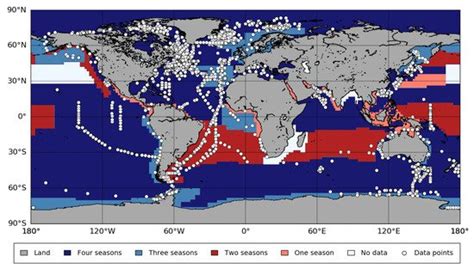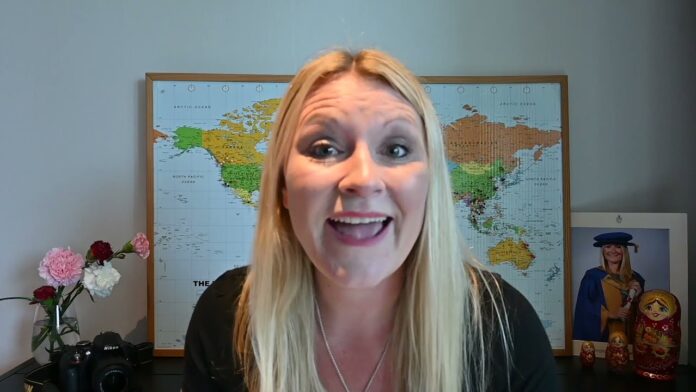The IUCN Red List of Threatened Species is a vital tool for understanding the conservation status of species across the globe. This comprehensive database provides insights into which species are thriving, which are at risk, and the steps needed to protect them. In this guide, we will walk you through the process of navigating the IUCN Red List, from accessing the platform to understanding the various conservation categories. Whether you’re a researcher, conservationist, or simply passionate about wildlife, this step-by-step guide will help you effectively use the Red List to contribute to global conservation efforts and stay informed about the changing status of biodiversity.
Dive deep into this topic alongside xotools.xyz
1. Introduction to IUCN Red List
The IUCN Red List of Threatened Species, often referred to as the IUCN Red List, is one of the most comprehensive resources for understanding the global conservation status of plants, animals, and fungi. Established by the International Union for Conservation of Nature (IUCN), the Red List assesses species across the world, categorizing them based on their risk of extinction. These assessments help conservationists, policymakers, researchers, and the public stay informed about the health of biodiversity and the urgent actions needed to preserve it.
The Red List categorizes species into groups such as Critically Endangered, Endangered, Vulnerable, and Least Concern, offering a global perspective on species conservation. It is not just a list of names but a powerful tool that reflects the changing conditions of ecosystems, human impact, and conservation measures.
For individuals interested in environmental conservation, the IUCN Red List serves as a key resource for understanding which species need immediate intervention and which are recovering. From academic research to practical on-the-ground initiatives, the Red List guides decisions at both local and international levels, offering valuable insights into the state of the natural world. This guide will provide you with everything you need to know to effectively navigate and utilize the IUCN Red List.

2. Accessing the IUCN Red List
Accessing the IUCN Red List is a straightforward process that allows anyone to explore the conservation status of species worldwide. The official website for the IUCN Red List (www.iucnredlist.org) is the primary platform for this information. Once on the site, users are greeted with a user-friendly interface that offers several options to begin their search.
The homepage features quick links to popular searches, such as species categorized by region, taxonomic group, or conservation status. A prominent search bar at the top allows users to input the name of a species, ecosystem, or region for immediate results.
Beyond the search functionality, the IUCN Red List website provides access to various tools, resources, and reports, making it an essential hub for conservationists, researchers, and educators. Users can also download the IUCN Red List mobile app for easier access on the go.
Whether you’re looking to explore detailed species assessments or monitor global biodiversity trends, the IUCN Red List is designed to make accessing this vital information as simple and effective as possible, offering a wealth of knowledge at your fingertips for protecting endangered species.

3. Understanding Red List Categories
The IUCN Red List categorizes species into different conservation statuses to reflect their risk of extinction. These categories range from Least Concern, which indicates a species is thriving, to Extinct, where no individuals are known to exist. In between, there are several critical stages: Vulnerable, Endangered, and Critically Endangered. Each of these indicates increasing levels of risk, based on factors such as population decline, habitat loss, and human impact.
Species may also be listed as Near Threatened, meaning they could soon face higher risk without intervention, or Data Deficient, where there’s insufficient information for a full assessment. Additionally, species can be marked as Extinct in the Wild if they only survive in captivity or controlled environments.
Understanding these categories is essential for grasping the severity of threats facing different species. By knowing where a species stands on the Red List, conservation efforts can be better prioritized to protect the most vulnerable.

4. Using the Species Search Function
The species search function on the IUCN Red List website is an essential tool for quickly finding information about specific species. To use it, simply type the name of a species, genus, or higher taxonomic group into the search bar at the top of the homepage. You can search using common names, scientific names, or even regions and habitats.
Once you enter your search, the results will display a list of species matching your query, along with their conservation status. Each species result links to a detailed assessment page, where you can view key data such as population trends, geographic range, threats, and conservation actions in place.
For more specific searches, you can filter results by criteria such as Red List category, country, or taxonomic group, allowing you to refine your exploration. This functionality makes the IUCN Red List highly adaptable, whether you’re a casual user curious about a particular species or a researcher looking for specific conservation data.
5. Reading Species Assessments
Species assessments on the IUCN Red List provide detailed insights into the status, trends, and threats facing individual species. Each assessment page includes key sections such as the species’ Red List category (e.g., Endangered, Vulnerable), population trend (e.g., decreasing, stable), and geographic range, helping users understand the extent of the species’ presence across the globe.
The assessment also highlights the primary threats the species faces, such as habitat destruction, climate change, or overexploitation, as well as any conservation actions currently in place. Additionally, users can view the history of the species’ Red List status over time, providing a snapshot of its conservation trajectory.
A valuable feature is the documentation on criteria used for classification, which explains why a species falls into a particular category. This transparency is key for understanding the basis of each listing, making it easier for researchers, conservationists, and policymakers to use this information in their efforts to protect biodiversity and develop effective conservation strategies.
6. Utilizing Red List Data for Conservation Efforts
The data available on the IUCN Red List is a powerful resource for guiding conservation efforts. By analyzing species assessments, conservationists can prioritize which species need urgent action and identify the most critical threats they face. For example, if a species is listed as Critically Endangered due to habitat loss, efforts can be focused on protecting or restoring its natural environment.
Policymakers and environmental organizations often use Red List data to shape national and international conservation policies. These data-driven decisions are critical for forming action plans that address species decline, enforce protective regulations, and allocate funding to the most urgent areas.
Researchers also rely on the Red List for insights into biodiversity trends, allowing them to study the impact of factors like climate change, deforestation, and pollution on ecosystems. The Red List can help track the success of conservation interventions by showing improvements or declines in species status over time.
Moreover, the Red List data serves as an educational tool for raising public awareness about global conservation issues. Engaging communities and stakeholders through the Red List can inspire collaborative efforts to protect threatened species and promote sustainable practices that benefit both wildlife and human populations.
7. Contributing to the IUCN Red List
Contributing to the IUCN Red List is an essential way to support global conservation efforts. If you are a researcher or conservationist with new information about a species, you can contribute by submitting data for review. The IUCN encourages contributions from experts who can provide up-to-date assessments on species’ conservation statuses, which helps ensure the Red List remains accurate and comprehensive.
To contribute, you can participate in the IUCN’s species assessment process. This involves gathering and submitting detailed information about a species’ population size, distribution, and threats. The data is reviewed by specialist groups and conservation experts who assess the validity and impact of the information.
Additionally, the IUCN offers opportunities for volunteers and collaborators to support data collection and analysis. Engaging with local conservation projects or participating in field surveys can provide valuable data that contributes to Red List assessments.
By contributing to the IUCN Red List, you play a vital role in improving the understanding of species’ conservation needs, helping to shape effective protection strategies, and fostering global awareness about biodiversity conservation. Your involvement can make a significant difference in preserving the world’s threatened species.
8. Staying Updated with the IUCN Red List
Staying updated with the IUCN Red List is crucial for keeping track of the latest developments in species conservation. The Red List website provides several ways to stay informed. Regularly visiting the website ensures access to the most current species assessments and updates on conservation statuses. The Red List frequently publishes new data, including updated assessments, newly evaluated species, and changes in existing categories.
To receive real-time updates, users can subscribe to the IUCN Red List newsletter, which delivers highlights and significant changes directly to your inbox. The newsletter includes information on new species listings, changes in conservation status, and key conservation news.
Additionally, following the IUCN Red List on social media platforms like Twitter and Facebook offers another way to receive updates and engage with the conservation community. Social media channels often share important announcements and conservation stories.
For those involved in conservation work, staying engaged with the Red List’s annual reports and technical publications provides in-depth analysis and trends in global biodiversity. This continuous flow of information helps ensure that conservation strategies remain relevant and responsive to emerging challenges in species protection.
9. Conclusion
The IUCN Red List of Threatened Species is an indispensable resource for understanding and addressing global biodiversity challenges. By providing detailed assessments of species’ conservation statuses, the Red List offers critical insights into which species are at risk and why, guiding targeted conservation actions and policies.
Navigating the IUCN Red List involves accessing the platform, understanding its categories, using its search functions, and interpreting species assessments to effectively utilize the data for conservation efforts. Contributing to the Red List with new data and staying updated with its latest developments are key actions for anyone involved in conservation work.
Whether you’re a researcher, policymaker, or conservation enthusiast, the IUCN Red List helps you make informed decisions and track the progress of global conservation efforts. It serves as a dynamic tool that reflects the ongoing changes in species status and the impacts of human activities on biodiversity.
By engaging with the Red List, you contribute to a global effort to protect endangered species and preserve our planet’s rich biodiversity for future generations. Your involvement and awareness are vital in fostering a collaborative approach to conservation and ensuring the survival of vulnerable species worldwide.
xotools.xyz









